
Disclosure: This article includes affiliate links. If you click and buy, I may receive a commission without any extra cost to you.
August 22, 2025
Finding a budget GPU in 2025 that handles 1080p gaming well can be hard. We want smooth gameplay, good frame rates, and a card that won’t drain your wallet or your power bill. We look for raw speed, memory size, power consumption, price, and features such as ray tracing or upscaling.
In this article, I’ll review eight solid options. I’ll list the specs, share the pros and cons, and help you make a smart pick.
What Matters in the Best Budget GPU
When hunting for the best budget GPU, several key factors matter. These elements affect not only how well the card performs today but also how future-proof it is for upcoming games and features:
- Core speed and architecture: A newer chip runs games smoother and lasts longer.
- Memory (VRAM): At least 8 GB is ideal to avoid slowdowns in big games.
- Power draw: I skip cards that need extra power or drive up your bill.
- Feature set: Ray tracing and smart upscaling (like FSR or DLSS) matter.
- Price and value: It must perform well per dollar.
- Driver maturity and support: Drivers affect game compatibility and updates.
We’ll weigh these for each card. I’ll keep the talk simple but deep where it counts.
Top Picks on the Best Budget GPU for 1080p Gaming
1. AMD Radeon RX 7600 – Best Overall AMD GPU for 1080p Gaming
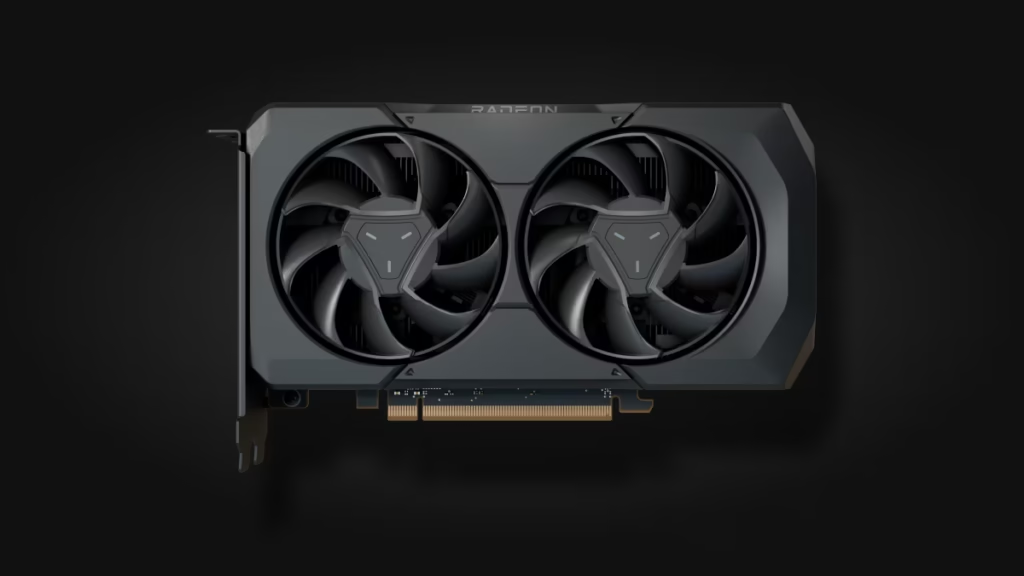
Image courtesy of AMD
Specifications
- GPU architecture: RDNA 3
- Game clock: around 2.6 GHz
- VRAM: 8 GB GDDR6
- TDP: ~165 W
- Ray tracing: 2nd-gen hardware, supports FSR
Pros
- Strong 1080p frame rates in most modern games
- Decent ray tracing at medium settings
- Smart upscaling via FSR
- Good price-to-performance ratio
Cons
- 8 GB may hit tight VRAM ceilings in heavy textures
- Needs a solid power supply
- Radeon drivers can still lag in some new titles
The RX 7600 shines in raw 1080p gaming. According to TechPowerUp’s RX 7600 review, this card hits 100–130 fps on high settings. Ray tracing works, but you may need to drop to medium to stay smooth. FSR helps regain frames and looks sharp. Steam VRAM charts show usage close to 7.5 GB in big games like Cyberpunk at ultra, so you may need to tweak some settings. Overall, it gives solid firepower without high cost or big power draw.
Between the RX 7600 and RTX 4060, pick based on priorities. The RX 7600 offers strong 1080p performance and great value with FSR, while the RTX 4060 uses less power and excels at ray tracing with DLSS 3. Choose speed or efficiency accordingly.
2. Nvidia GeForce RTX 4060 – Best Overall Nvidia GPU for 1080p Gaming
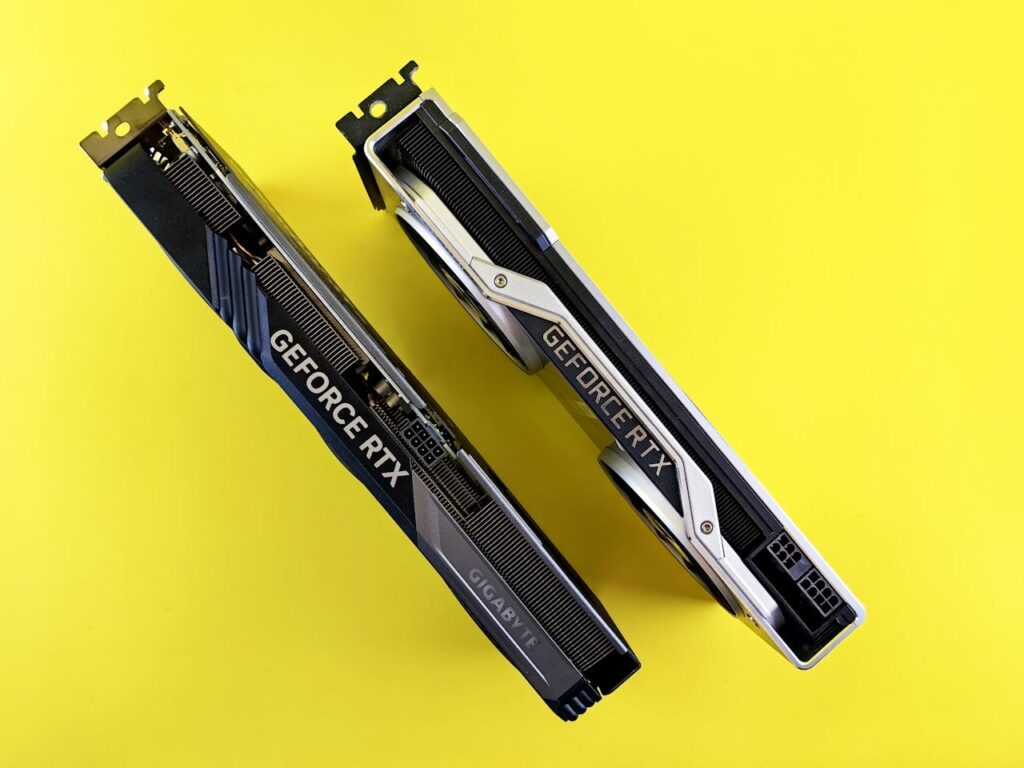
Representative image. Not the actual Nvidia GeForce RTX 4060.
Specifications
- Architecture: Ada Lovelace
- Boost clock: up to ~2.5 GHz
- VRAM: 8 GB GDDR6
- TDP: ~115 W
- Ray tracing: 3rd‑gen RT, supports DLSS 3
Pros
- Lower power draw
- Ray tracing is smooth with DLSS
- DLSS 3 gives big performance boosts
- Quiet, cool card
Cons
- 8 GB VRAM is a bit tight in some games
- DLSS 3 needs new driver support for older games
RTX 4060 uses less power. You get great frame rates and ray tracing looks crisp using DLSS 3. In 2025 games, 4060 with DLSS 3 can hit 120 fps in 1080p, even with ray tracing on medium. According to Tom’s Hardware’s RTX 4060 review, it delivers smooth, efficient gaming. VRAM usage still peaks at 8 GB in some modern games, so you might need to dial back a few settings over time. Nvidia’s drivers remain stable and are widely supported across new releases.
For gamers prioritizing ray tracing and power efficiency, the RTX 4060 is a solid pick. But if you want a graphics card with a large 16 GB VRAM to handle demanding textures and future games, the Intel Arc A770 offers better memory, albeit with higher power consumption and less polished drivers.
3. Intel Arc A770 – Best Overall Intel GPU for 1080p Gaming
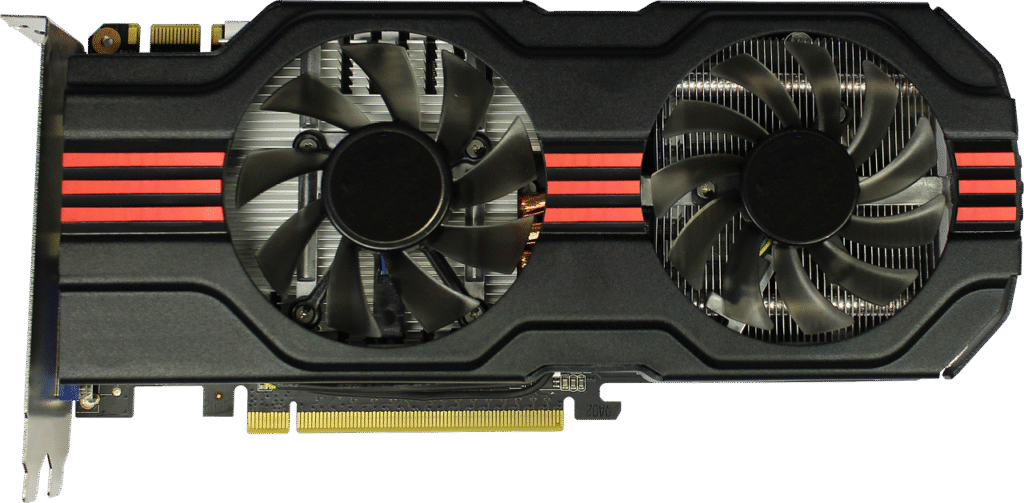
Representative image. Not the actual Intel Arc A770.
Specifications
- Architecture: Intel Arc 1st gen
- Boost clock: ~2.2 GHz
- VRAM: 16 GB GDDR6
- TDP: ~225 W
- Ray tracing and Intel’s XeSS upscaling
Pros
- Huge 16 GB VRAM buffer
- Affordable used or retail price
- XeSS works well with supported games
- Good raw pixel performance
Cons
- High power draw
- Drivers still not as polished
- Less ray‑tracing support in more games.
As reviewed by TechPowerUp, A770 offers a massive VRAM buffer, which helps future-proof for heavy games. It crushes 1080p raw performance, but ray tracing support isn’t as wide, and drivers can be hit or miss. Some games crash or need config tweaks. XeSS covers that in supported titles, delivering good performance. Still, the card’s cheap price and VRAM make it a bargain if you don’t mind some troubleshooting.
4. AMD Radeon RX 7600 XT– Top AMD GPU for High-Refresh 1080p Gaming
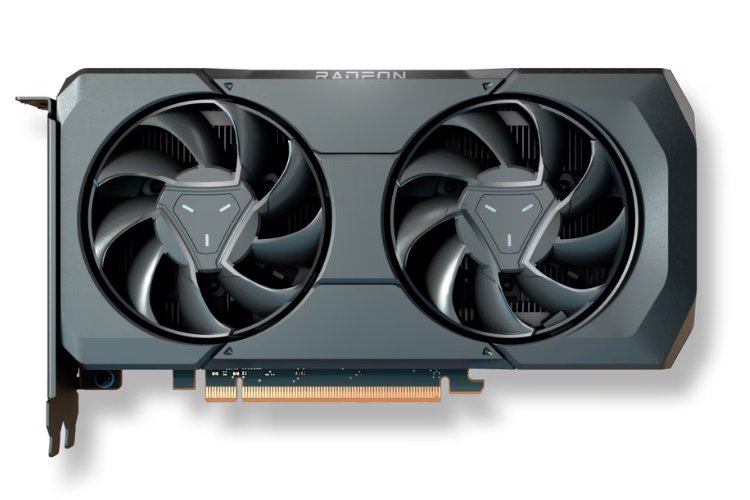
Image courtesy of AMD
Specifications
- Architecture: RDNA 3
- Game clock: around 2.8 GHz
- VRAM: 16 GB GDDR6
- TDP: ~205 W
- Ray tracing with FSR
Pros
- Faster than RX 7600—better frame rates
- Maintains strong value
- Good for future AAA titles at 1080p
Cons
- Still only 8 GB VRAM
- Higher power draw
- Fewer ray‑trace frames than Nvidia with DLSS
Benchmark results from Tom’s Hardware show the 7600 XT uses the same core but runs faster. We see an average of 110–140 fps on high in most titles. Ray tracing is okay with FSR, but you may drop to medium for smooth 60+ fps. Power draw rises, so check your PSU. A very strong card for raw speed. I expect it to serve well into late 2025.
The RX 7600 XT boosts performance over the RX 7600 at the cost of power consumption and supports ray tracing via FSR. Meanwhile, the RTX 4060 Ti adds DLSS 3 and a 16 GB VRAM option for improved ray tracing and future-proofing, making it a preferable choice.
5. Nvidia GeForce RTX 4060 Ti – Top Nvidia GPU for High-Refresh 1080p Gaming

Representative image. Not the actual Nvidia GeForce RTX 4060 Ti.
Specifications
- Architecture: Ada Lovelace
- Boost clock: ~2.5 GHz
- VRAM: 8 GB
- TDP: ~160 W
- Ray tracing 3rd‑gen, DLSS 3
Pros
- Excellent frame rates and ray tracing
- DLSS 3 gives a strong uplift
- Good balance of power and performance
Cons
- 8 GB VRAM can still limit some titles—16 GB version costs more
- Price is higher than the base 4060
According to TechPowerUp, the 4060 Ti gives a step up in raw speed and ray tracing. At 1080p, paired with DLSS 3, it crushes 144 fps targets in medium to high settings. VRAM can be a bottleneck unless you opt for the 16 GB model—costs more, but future‑safe. It sits in the sweet spot for gamers who want high frame rates without going full high tier.
The RX 6500 XT offers low power and price for esports, but its 4 GB VRAM and weak ray tracing hinder modern games. The RTX 3050, with 8 GB VRAM and DLSS 2, delivers better ray tracing and handles medium settings well.
6. AMD Radeon RX 6500 XT – Best Budget AMD GPU for 1080p Gaming

Image courtesy of AMD
Specifications
- Architecture: RDNA 2
- Game clock: ~2.6 GHz
- VRAM: 4 GB GDDR6
- TDP: ~107 W
- Basic ray tracing, FSR
Pros
- Very low power draw (no extra cables)
- Very low price—used or sale deals are common
- Good profiles for esports and light games
Cons
- Just 4 GB VRAM; drops frames in heavy games
- Struggles with modern AAA beyond low/medium
- Ray tracing is nearly unusable
The 6500 XT is a bare-bones fighter. It handles esports games well—100+ fps at 1080p in Fortnite or CS2 on medium. But modern AAA titles push past the 4 GB VRAM limit, and performance drops hard. Ray tracing is barely usable. This card works for very tight budgets or older games. If you plan to play big modern titles, skip this one. Tom’s hardware RX 6500 XT review. backs up these points with detailed benchmarks.
7. Nvidia GeForce RTX 3050 – Best Budget Nvidia Graphics Card for 1080p Gaming
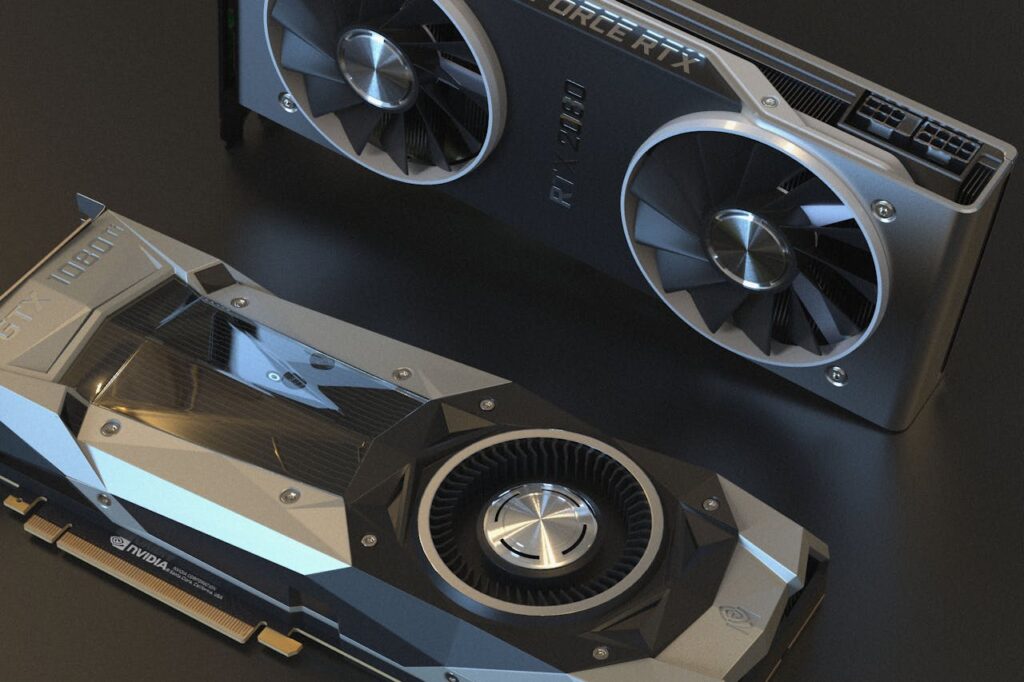
Representative image. Not the actual Nvidia GeForce RTX 3050.
Specifications
- Architecture: Ampere
- Boost clock: ~1.8 GHz
- VRAM: 8 GB GDDR6
- TDP: ~130 W
- Ray tracing 2nd‑gen, DLSS 2
Pros
- Decent at older AAA games with DLSS
- Lower price than 4060
- Lower power draw than most others
Cons
- Struggles in modern games with high settings
- DLSS 2 is not as strong as DLSS 3
- Limited ray tracing due to fewer cores
The RTX 3050 was Nvidia’s entry-level unit before. It still plays 1080p games okay if you keep settings at medium or lower. PC Gamer’s review of the RTX 3050 notes that DLSS 2 helps, but it isn’t a huge leap. Ray tracing needs a lot of compromises, according to PC Gamer. It’s not as strong as the RTX 4060, but it gets the job done if you find it cheap.
Between the RTX 3050 and 4060 in power, the Intel Arc A580 features XeSS upscaling but suffers from unstable drivers and spotty game support. It’s a budget-friendly choice if you don’t mind some setup, but Nvidia is smoother overall.
8. Intel Arc A580 – Best Budget Intel Graphics Card for 1080p Gaming

Image from ASRock
Specifications
- Architecture: Intel Arc 1st gen (Xe‑2 cores)
- Boost clock: ~2.1 GHz
- VRAM: 8 GB GDDR6
- TDP: ~225 W
- Ray tracing and XeSS support
Pros
- Good price when on sale
- XeSS helps boost performance
- Decent raw core or pixel rates for price
Cons
- Drivers still rough
- Not many games support XeSS well
- Power draw is higher than the Nvidia mid‑tiers
The A580 sits between the RTX 3050 and 4060 in raw results. You get decent FPS, but driver performance and game support are spotty. Some titles run great, others glitch or crash. Tom’s Hardware’s A580 review highlights this trade-off clearly. XeSS may be your friend when supported. The card works well for budget builds, but be ready to spend some time tweaking settings and drivers.
Comparison Table (Quick Reference)
| GPU | VRAM | Power | Ray Tracing + Upscale | Best Strengths | Weaknesses |
| RX 7600 | 8 GB | 165 W | 2nd‑gen + FSR | Raw 1080p speed | VRAM tight, moderate power |
| RTX 4060 | 8 GB | 115 W | 3rd‑gen + DLSS 3 | Low power, DLSS smooth | VRAM tight |
| Arc A770 | 16 GB | 225 W | RT + XeSS | Huge VRAM, price | Drivers, power, support issues |
| RX 7600 XT | 16 GB | 205 W | 2nd‑gen + FSR | Fast, upcoming games | Still 8 GB, more power |
| RTX 4060 Ti | 8/16 GB | 160 W | 3rd‑gen + DLSS 3 | High fps, future proof | Price, VRAM optional |
| RX 6500 XT | 4 GB | 107 W | Entry-level + FSR | Cheap, low power | VRAM is too small, limited |
| RTX 3050 | 8 GB | 130 W | 2nd‑gen + DLSS 2 | Older game support | Weak for modern AAA, RT |
| Arc A580 | 8 GB | 175 W | RT + XeSS | Price, raw performance | Drivers, support, power |
Conclusion
In 2025, many good GPUs will deliver 1080p gaming power without breaking the bank. You want one that gives strong frames, keeps up with new tech like ray tracing, and fits your power budget.
If you want smooth gaming without heavy power use, RTX 4060 is your best all‑round pick. If you want the best raw value, the AMD RX 7600 delivers strong 1080p performance for the price, with solid FSR support and reliable results in most games. If speed is your top focus, go for RX 7600 XT.
If you want VRAM to last you a few more years, step into Arc A770, but be ready to tweak. RTX 4060 Ti sits nicely between, especially with the optional 16 GB. For very tight money, RX 6500 XT does esports well, while RTX 3050 gives a taste of ray tracing in less demanding games. Arc A580 sits mid and rewards patience.
Once you pick the right GPU, make sure your system is balanced. For step-by-step help, check out my guide to building a gaming PC from scratch.
